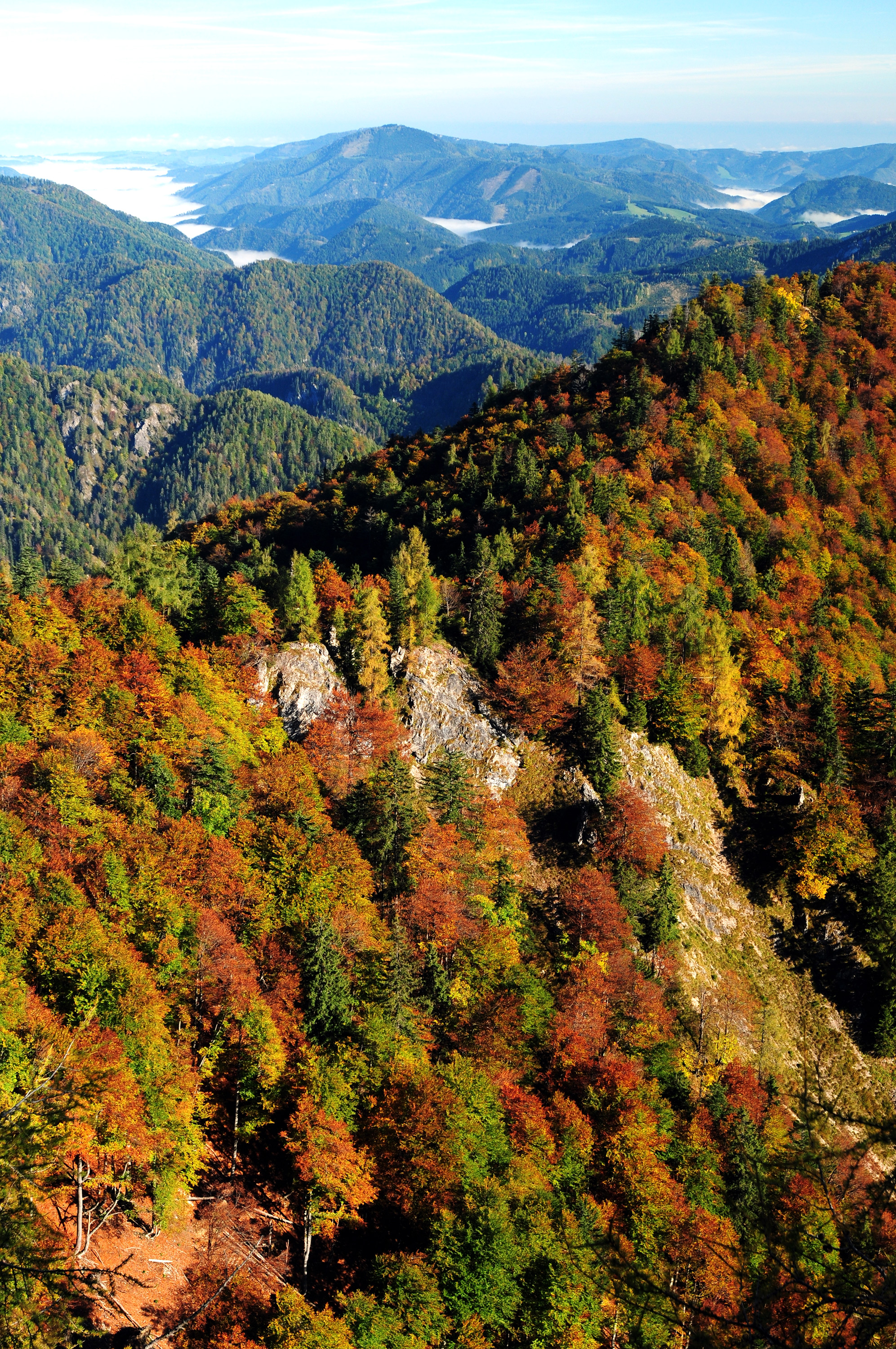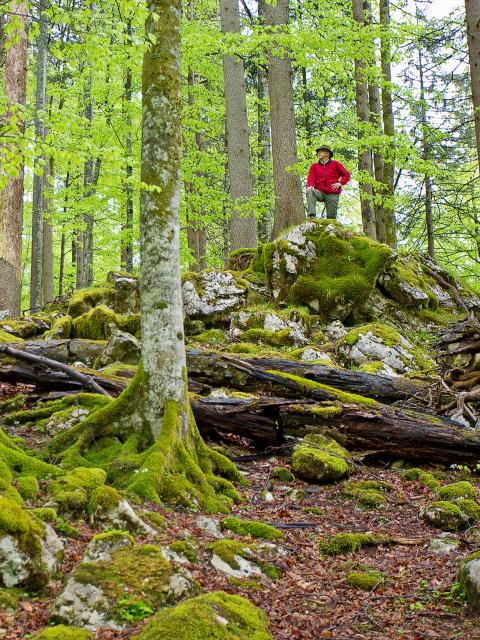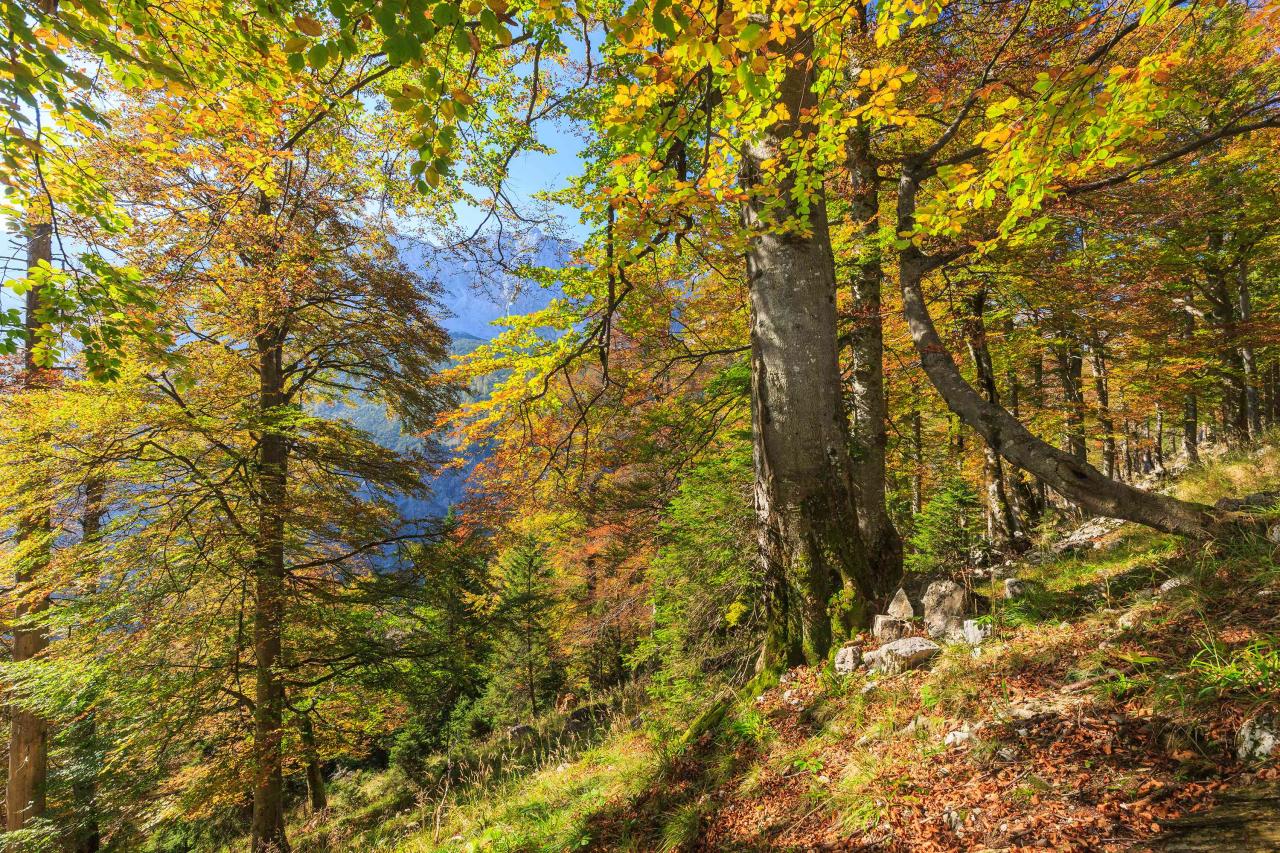Unique natural treasure
Europe's last primeval forests
European beech forests are Europe's original wilderness. The majority of Europe's primeval forests have been cut down over the centuries, and the remaining remnants are not very natural due to human use. The protection of Europe's last primeval beech forests is of great importance for the rich biodiversity associated with them.
With the establishment of Kalkalpen National Park in 1997, Austria's last large forest wilderness was placed under protection. Over 80 percent of the protected area is covered in forest. The ancient beech forests have been a UNESCO World Natural Heritage Site since 2017. A great distinction.
The beech forests in the Kalkalpen National Park and wilderness area Dürrenstein-Lassingtal are Austria's first and so far only UNESCO World Natural Heritage Site. They are therefore part of the irreplaceable natural heritage for all of humanity and are on a par with world-class sites such as the Great Barrier Reef off the Australian coast or the Grand Canyon in the USA.


Kalkalpen National Park
Largest beech forest reserve in the Alps
With its valuable old forests and primeval beech forests, Kalkalpen National Park is the most important national forest park in the Alps. More than 10,000 species of animals, plants and fungi can be found in these mixed deciduous forests dominated by beech trees. With an area of 5,252 hectares, Kalkalpen National Park is not only the largest beech forest reserve in the Alps, it is also home to the oldest beech tree with a proud age of over 550 years.
- Largest beech forest reserve in the Alps
- 5,250 ha are a World Natural Heritage Site
- Oldest beech tree in the Alps - over 550 years old
- 41 species of jungle relict beetle species
- 6 different types of beech forest

Natural. Species-rich. Future-proof.
Quite a forest
Natural forests are full of native biodiversity. Everything is there: young and old, thick and thin, natural dynamics, structural richness. The more diverse a system, the more stable it is. In the national park, we humans can observe what nature is really like. Our native species find everything they need to live in the national park.
The high number of primeval forest birds and beetles, which can only exist in forests with sufficient old trees and deadwood, is outstanding: The white-backed woodpecker, for example, is a primeval forest dweller and is therefore only rarely found in Austria. It feeds on beetle larvae, such as those of the beautiful Alpine longhorn beetle. This beetle, which has also become rare, is in turn dependent on dead beech wood for its reproduction. If our native flora and fauna are to survive, they need sufficient natural habitats.

UNESCO World Heritage Site
"... irreplaceable and of inestimable value to humanity."
UNESCO (United Nations Educational, Scientific and Cultural Organization), based in Paris, is an international organization and one of the 17 legally independent specialized agencies of the United Nations. We usually know the term World Heritage as UNESCO World Cultural Heritage in connection with man-made monuments and sites. Natural formations and natural sites of outstanding universal value, on the other hand, are declared UNESCO World Natural Heritage Sites.
Inclusion on the World Heritage List is both an honor and an obligation. The natural and cultural sites are the ideal property of all mankind and must be preserved in their special character for future generations.




